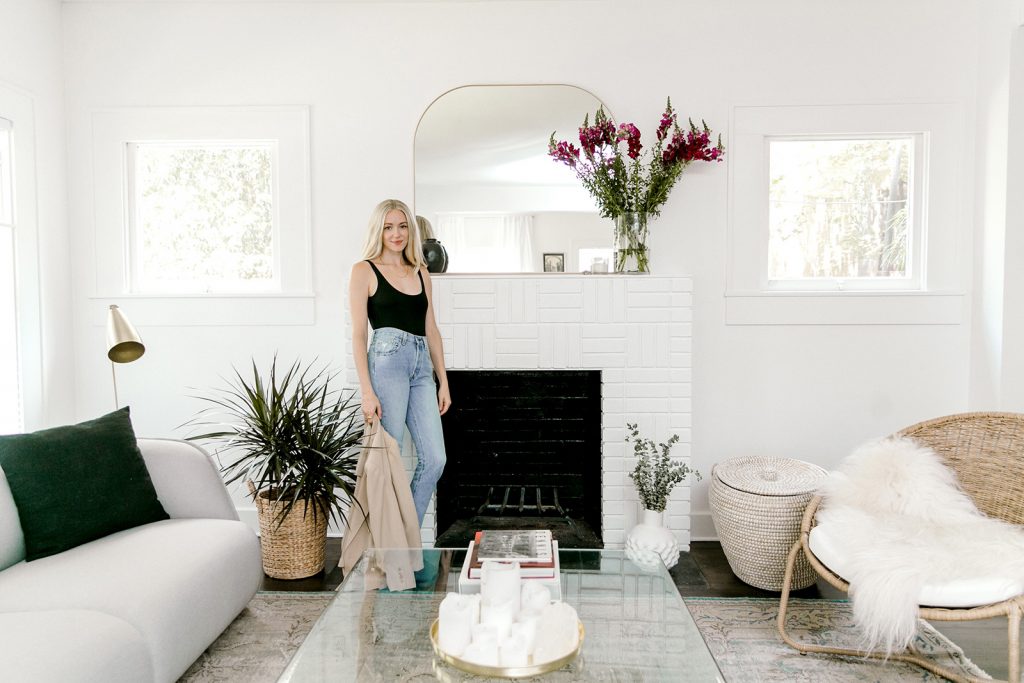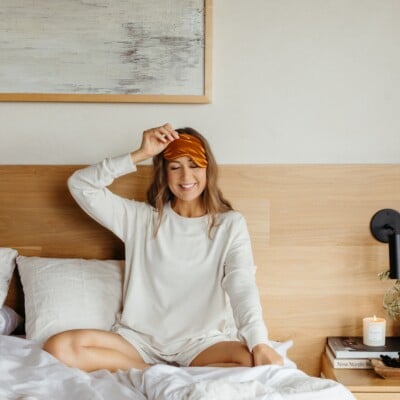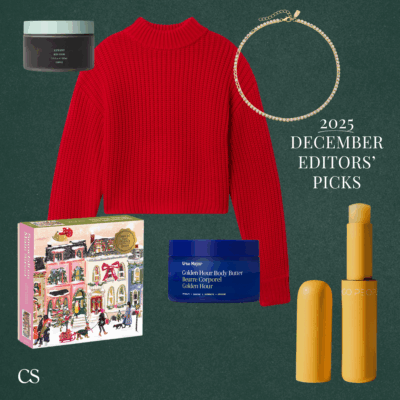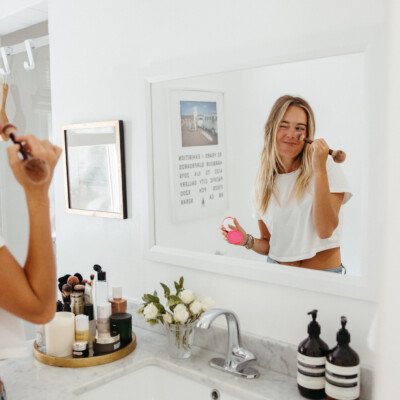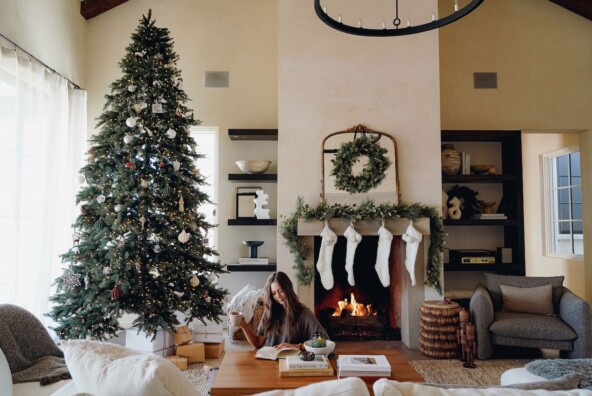Just walking into Brigitte Sharp’s Hyde Park bungalow is a lesson in design. The founder and creative director of Lou is something of a rogue master of effortless style. She never attended design school, yet somehow found herself working for Marc Jacobs and Cushnie et Ochs after college. Years of hard work in New York served as an informal education, where she wisely spent time working in both the creative and production sides of the business. By the time her husband’s job landed the couple in Austin, Brigitte was uniquely qualified to start her own line.
But could she really run a fashion business outside of New York? Where would she manufacture the product? How would she build out her team?
Read on to discover exactly how Brigitte is pioneering a new wave of design — one where you can work from (and live) wherever you want.
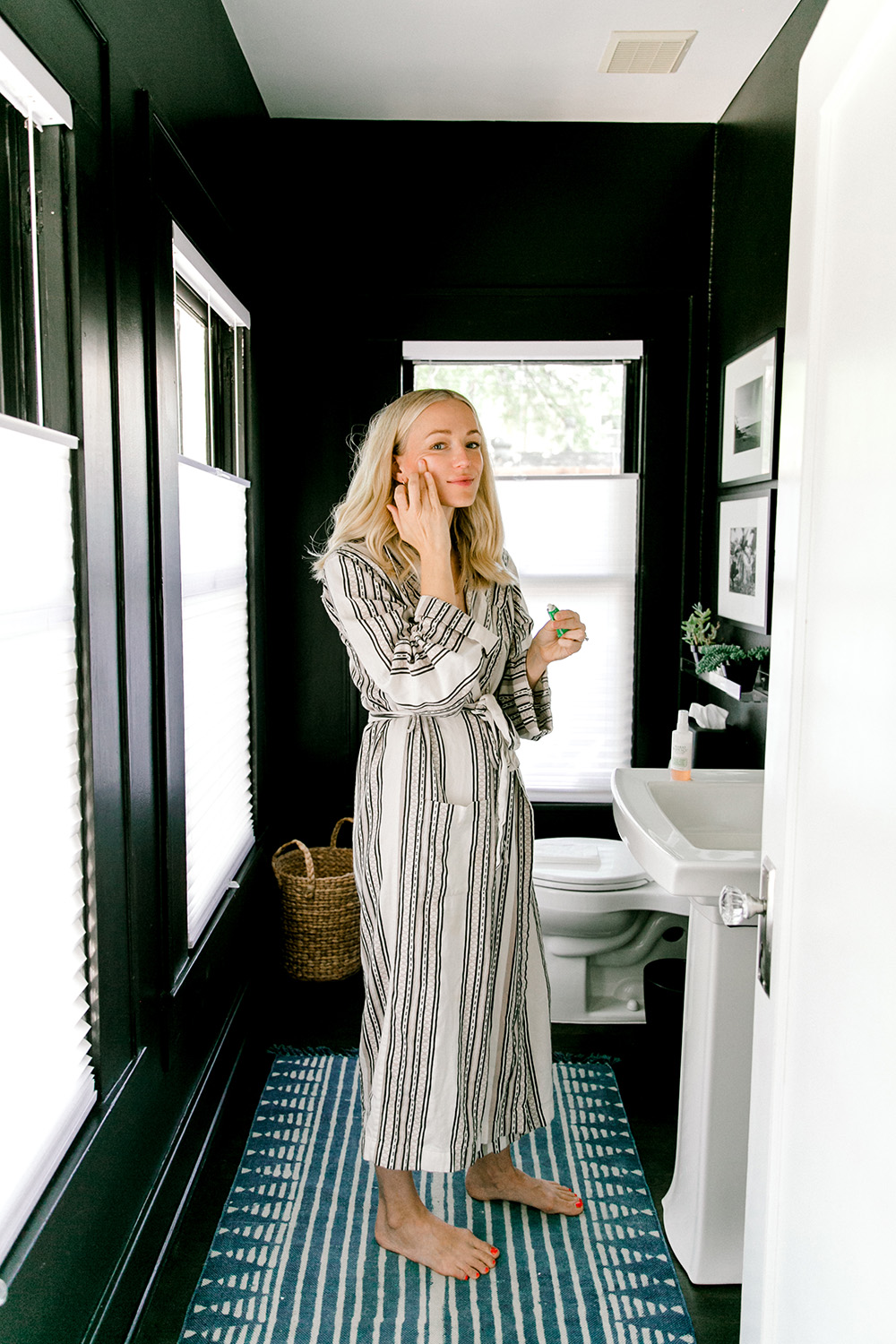
Your new line is popping up everywhere from The Zoe Report to Who What Wear… and we’re impressed by the fact it’s actually produced in Los Angeles. Not an easy choice in today’s market. What inspired your vision for the brand?
First and foremost, I am a product person. When creating Lou, it was very important to me to produce the collection in the US — all of the shoes are made in Los Angeles out of leather sourced from Italy. Working for two very aesthetically different brands in the past (Marc Jacobs and Cushnie et Ochs) helped me define my own personal style and create a strong point-of-view when developing designs for Lou.
When creating collection 01, my goal was to design elegant and confident shoes without sacrificing quality or comfort. I envisioned a brand that experiments with contrasts and strikes a balance between feminine and masculine, using minimal embellishments but rich textures, with classic designs made modern through fit and luxurious materials. Lou shoes are meant to be worn and cherished. They’re the shoes in your closet that you keep coming back to, again and again.
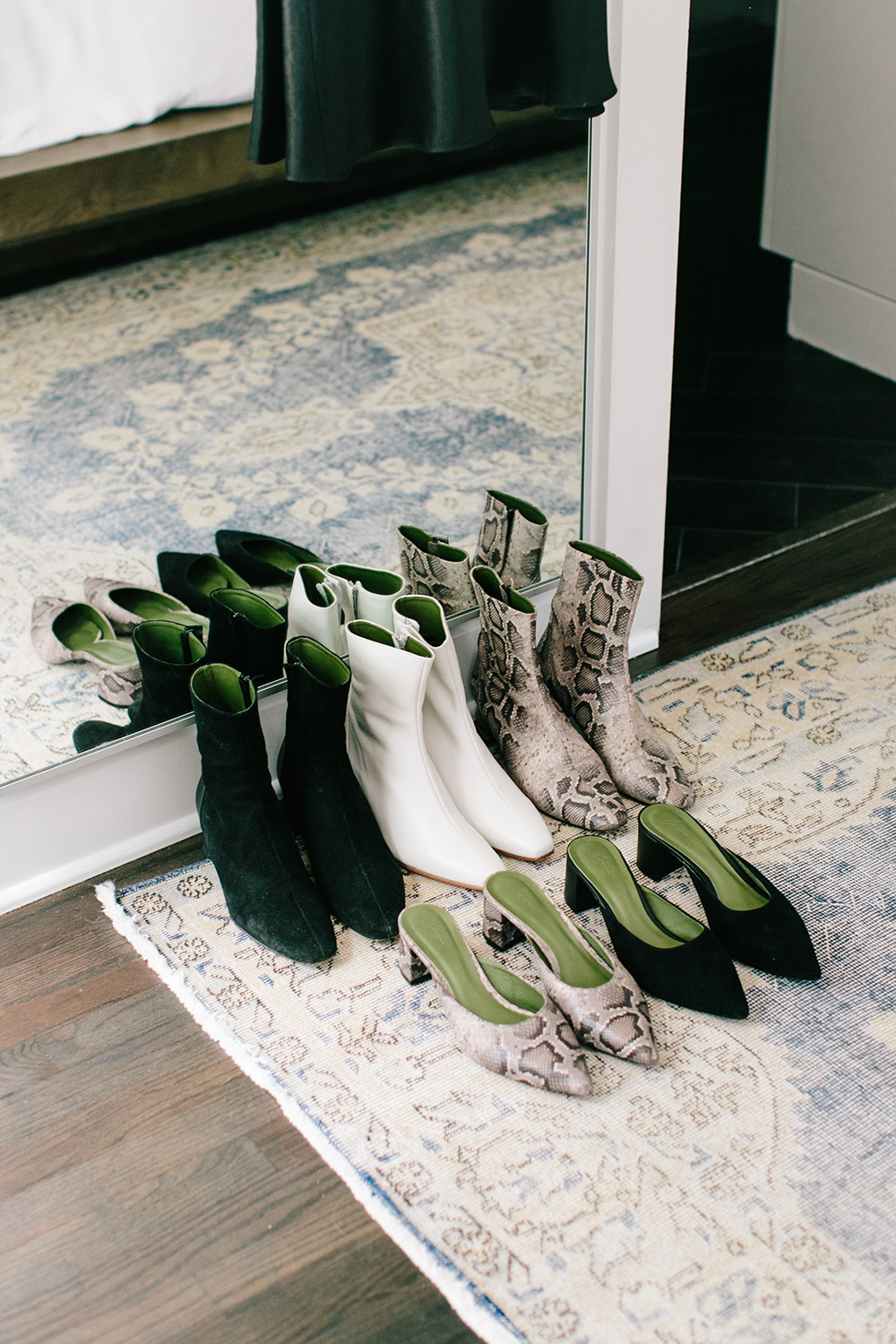
Your designs are a beautiful mix of aspirational design and real life functionality. Did you feel that was a void that needed to be filled in the footwear market?
Thank you! When it comes to footwear in particular, I have always had a very specific aesthetic vision.
When I was pregnant, I found myself endlessly searching for a certain style of boot, but I just couldn’t find what I was looking for. My frustration with what I found to be lacking in the market definitely got my wheels turning, but it wasn’t until after the arrival of my daughter that I found the courage to take the risk and develop my own brand.
As a new mom, I still wanted to look stylish and polished, but my lifestyle had significantly changed. Certain types of shoes just didn’t work for my day-to-day anymore. Living in a casual city like Austin, it can be tempting to wear sneakers and Birkenstocks everyday, but after a while, it’s time to step up your game. I decided to start small with two core styles — the ankle boot and the mule. In one day I sketched the Simone boot and Bardot mule, and both have been essentials in my wardrobe ever since.
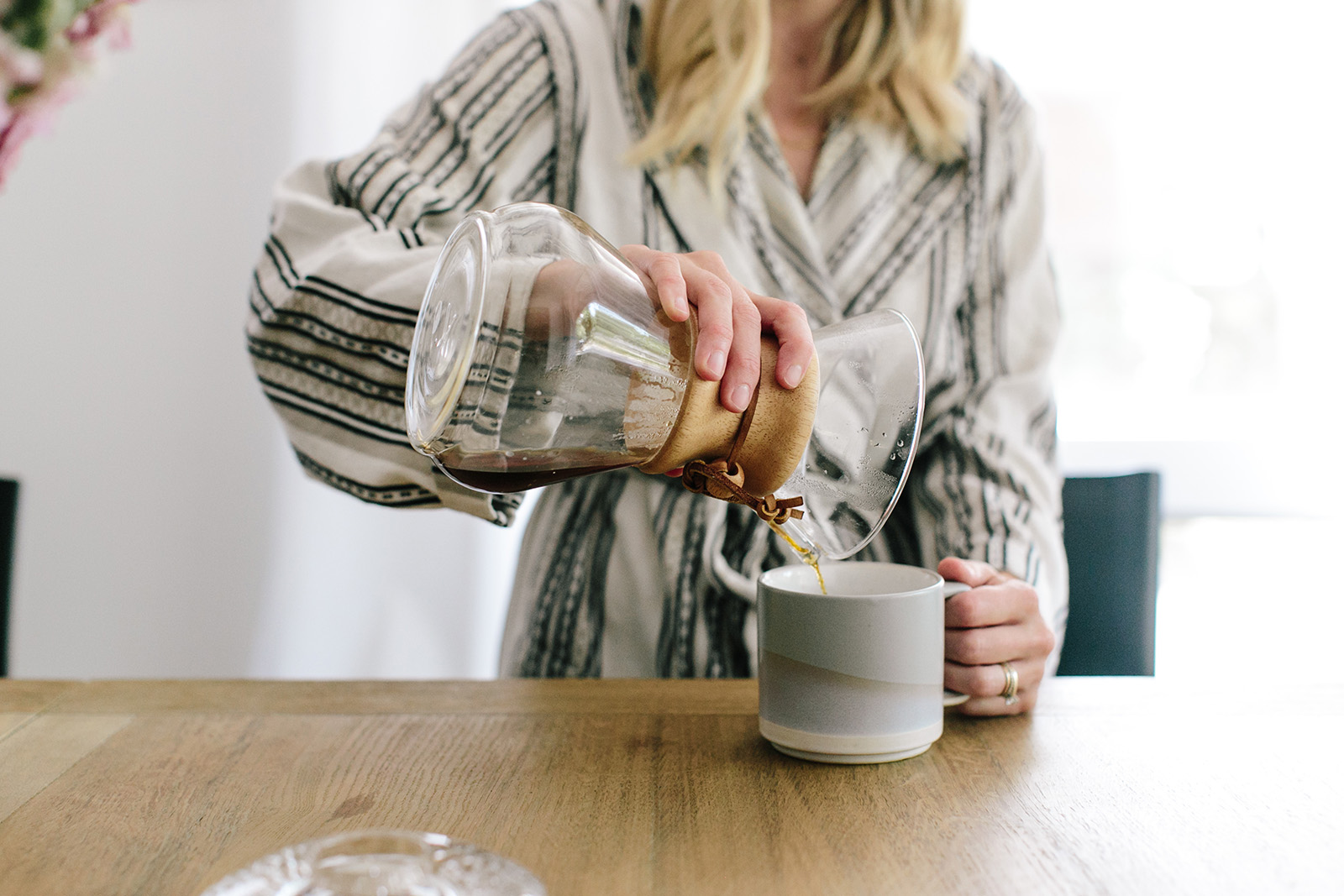
Tell us a little about your career background. You spent many years working in the fashion world in New York, with stints at big names like Marc Jacobs. How did those experiences shape you as a designer?
When I was 23, I moved to NYC with no job and no friends, just a year’s worth of savings from working in Chicago. I applied for every assistant level job in fashion I could find, and by chance, I met my friend’s cousin who was working at Marc Jacobs at the time. We ended up hitting it off, and she personally walked my resume down to HR and persuaded them to take a chance on me. I was offered a production assistant role for Marc by Marc Jacobs, and I didn’t even know what production was! I knew it was an opportunity that I couldn’t pass up, so I accepted the job and stayed with the company for over 4 years. I was completely green when I started, but I left with a very strong foundational training. Working for such an established company taught me how a fashion company operates behind the scenes, and gave me a deep respect for the artistry and craftsmanship that goes into such a storied brand.
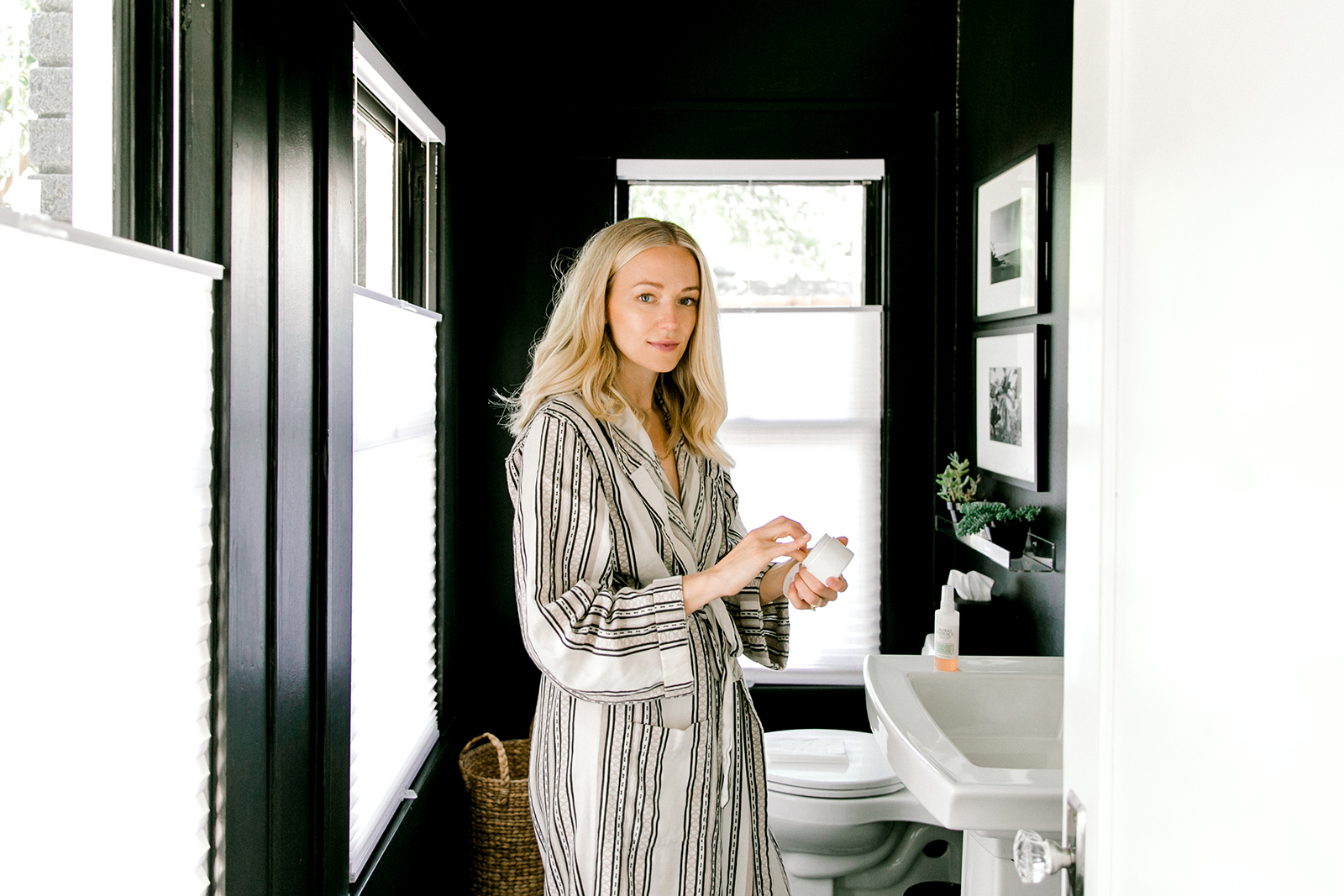
Eventually, I was craving a very hands-on role, and I accepted a position overseeing product development and production for Cushnie et Ochs, which at the time, was a young company with only a handful of employees. My time there was really special. I worked directly with the co-founders in every step of the product life-cycle. Every collection was exclusively made in New York, so I was exposed to the best in terms of factories, pattern-makers and textile mills. It was an invaluable experience that really allowed me to grow professionally.
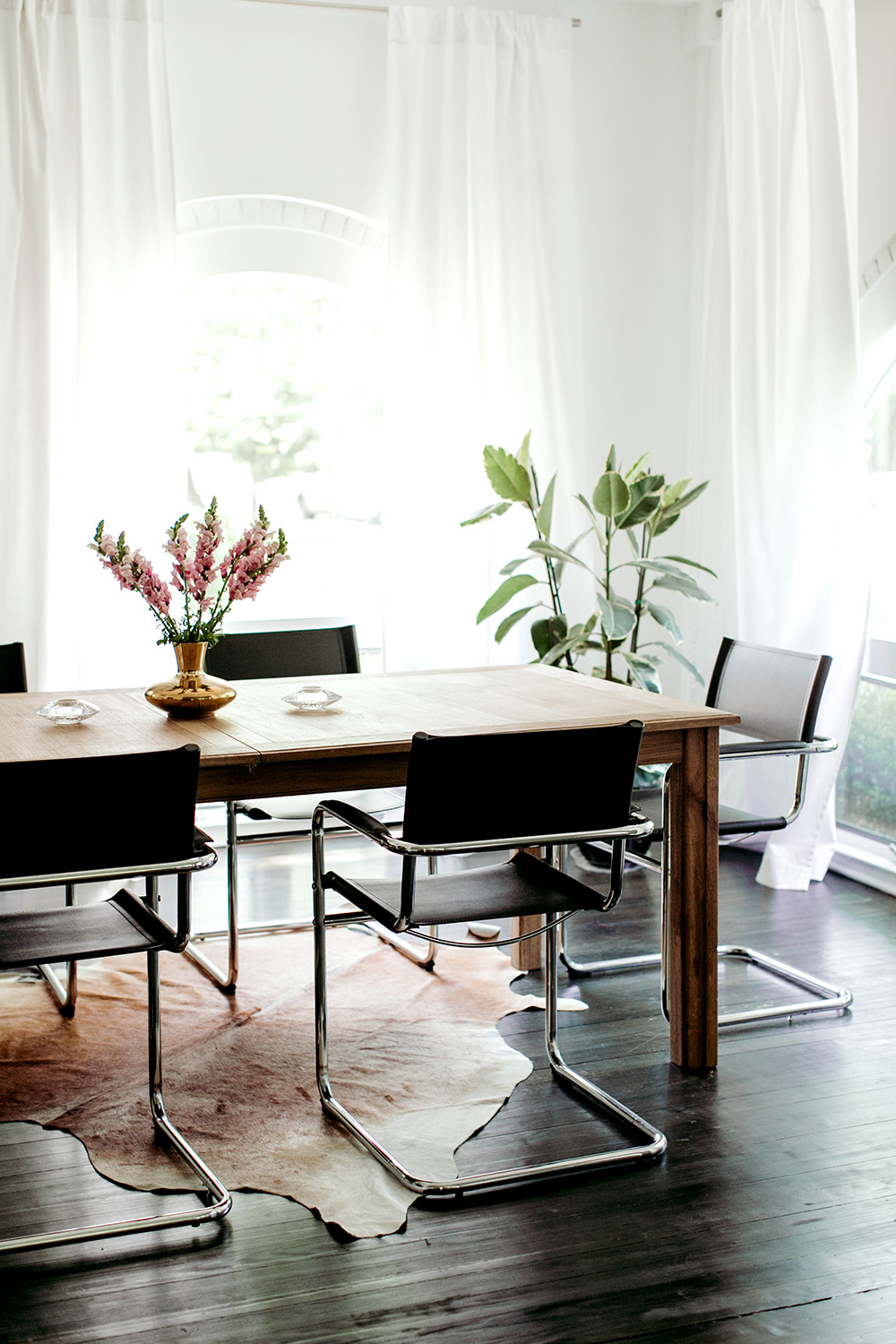
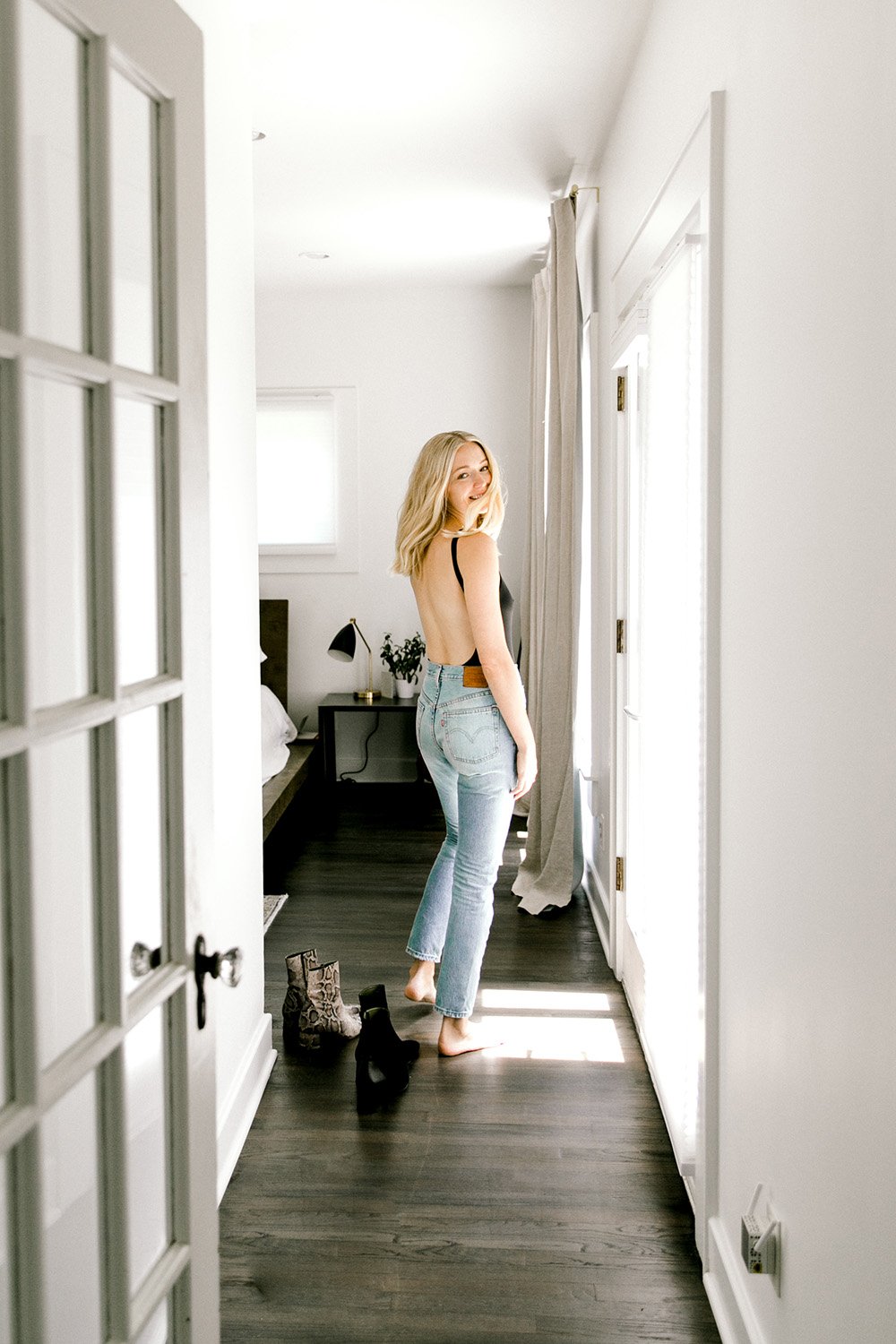
Is working in fashion as a designer different when you’re based outside of New York?
Working in fashion, in any position, is very different when you’re not based in New York. You have limited access to readily available resources and there are fewer companies to work for. If you own a brand in a smaller city, it can be more challenging to find the right talent for your team. Thankfully, the internet makes almost anything possible these days, but there are definitely more hurdles to jump over when you’re not based in NYC or LA. However, I’ve also found that a great sense of freedom comes with it.
Although the fashion industry is constantly changing, fashion in NYC can follow a very conventional path. It wasn’t until I moved to Austin that I realized I could still work in the industry, but more on my own terms.
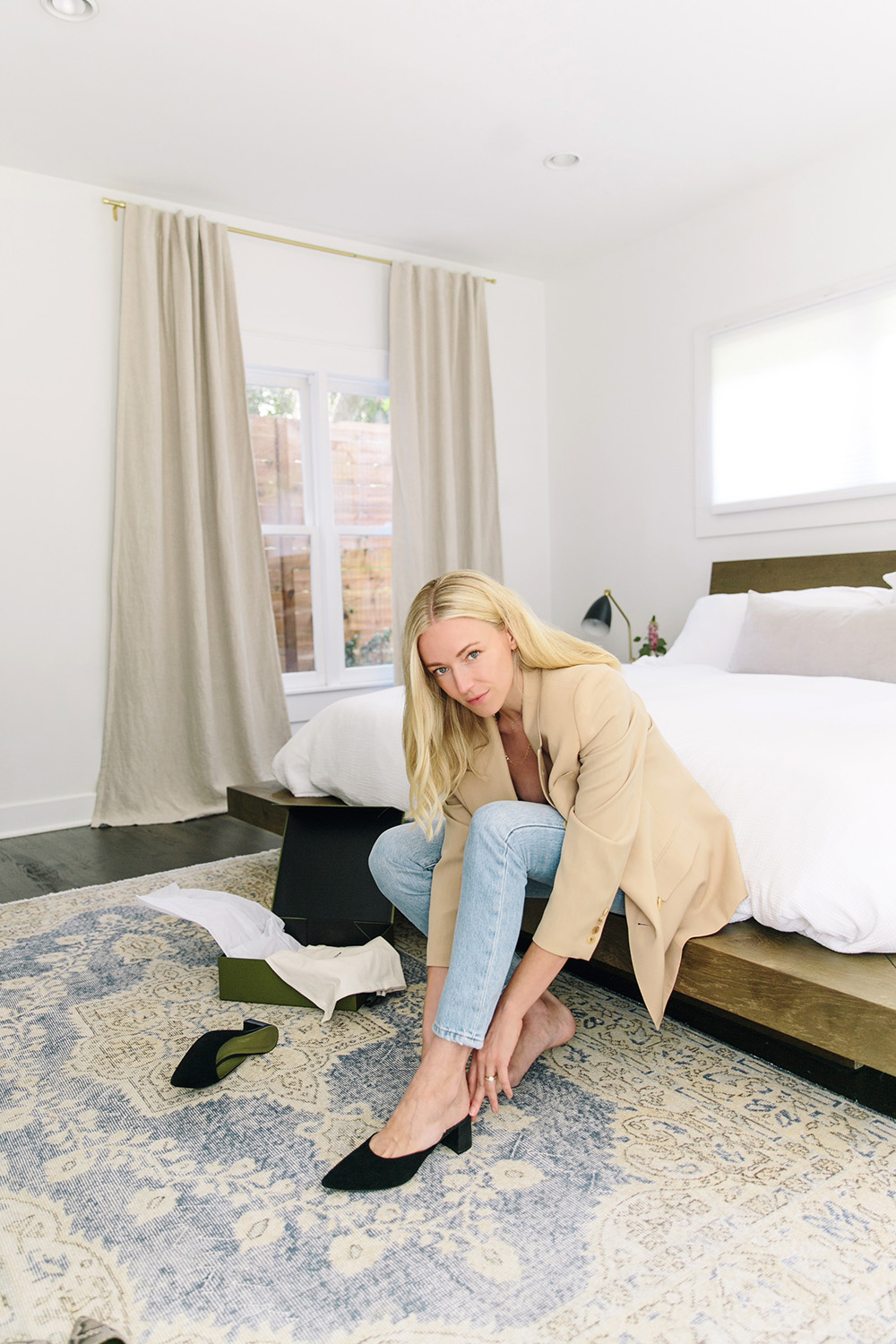
What’s your daily uniform?
Since becoming a mom, I’ve completely streamlined my daily uniform – vintage jeans, either a tee or white linen top, and depending on the weather, my Simone boots or a flat sandal.
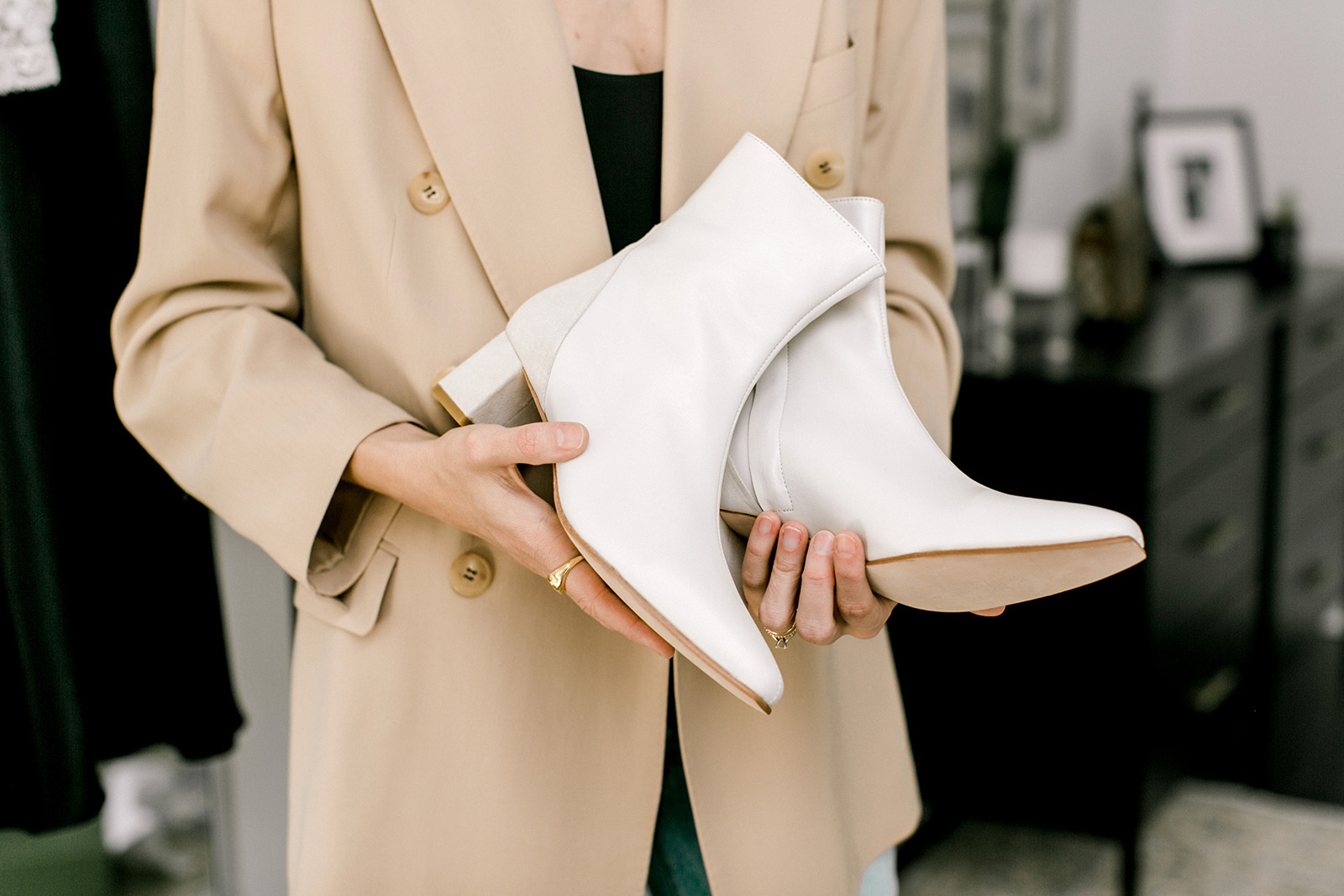
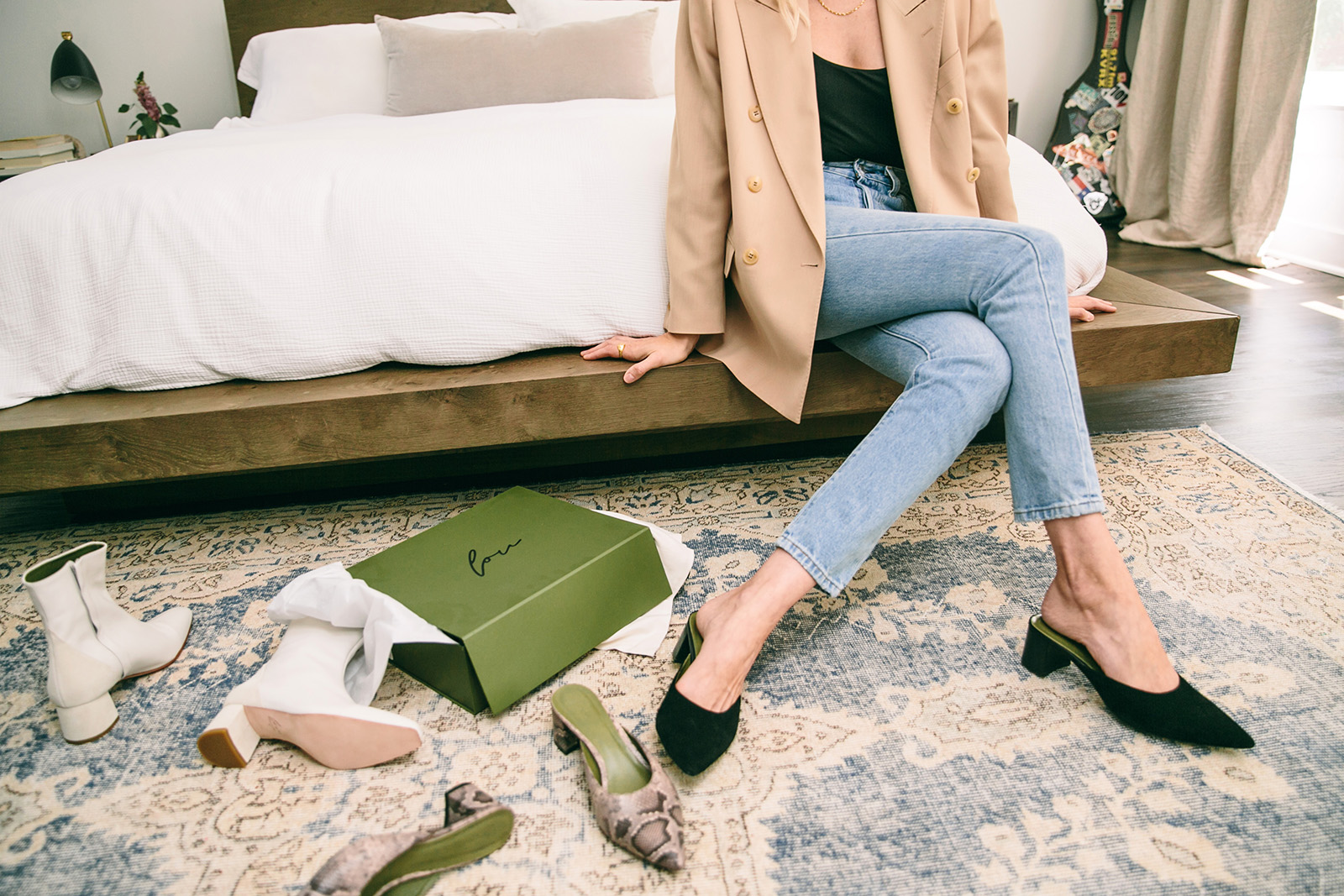
What makes a great outfit?
I think a great outfit is a true reflection of the person who is wearing it. You can be dressed in head-to-toe designer, but if the clothes look like they’re wearing you and not the other way around, the look will fall flat every time.
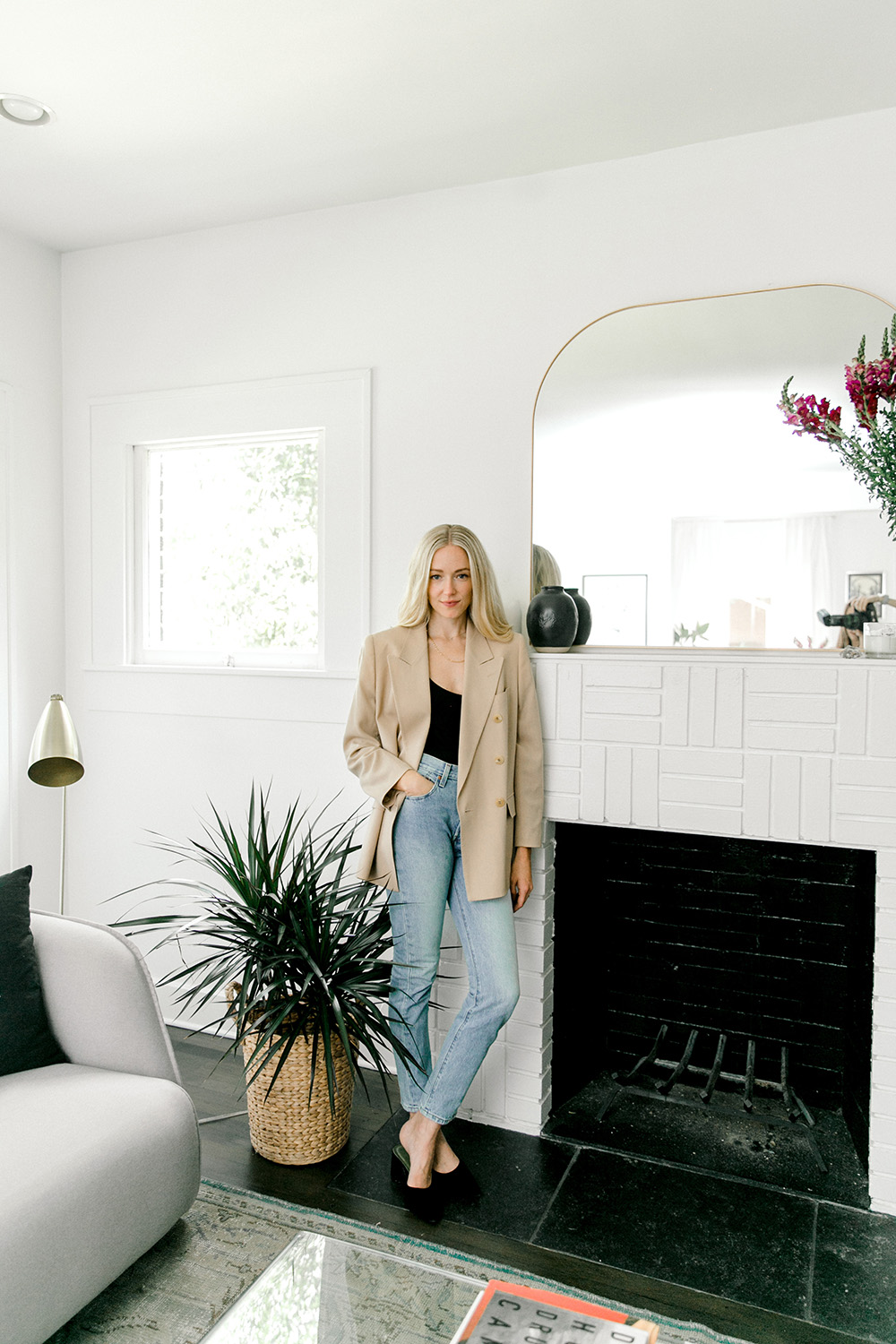
Describe your style in 5 words or fewer.
Minimalist, timeless and focused.
Who are your style icons/inspirations?
I’m constantly inspired by women who are confident in their own skin and whose personal style resonates no matter what the latest trend is. My style icons are Lauren Hutton, Diane Keaton and Tilda Swinton.
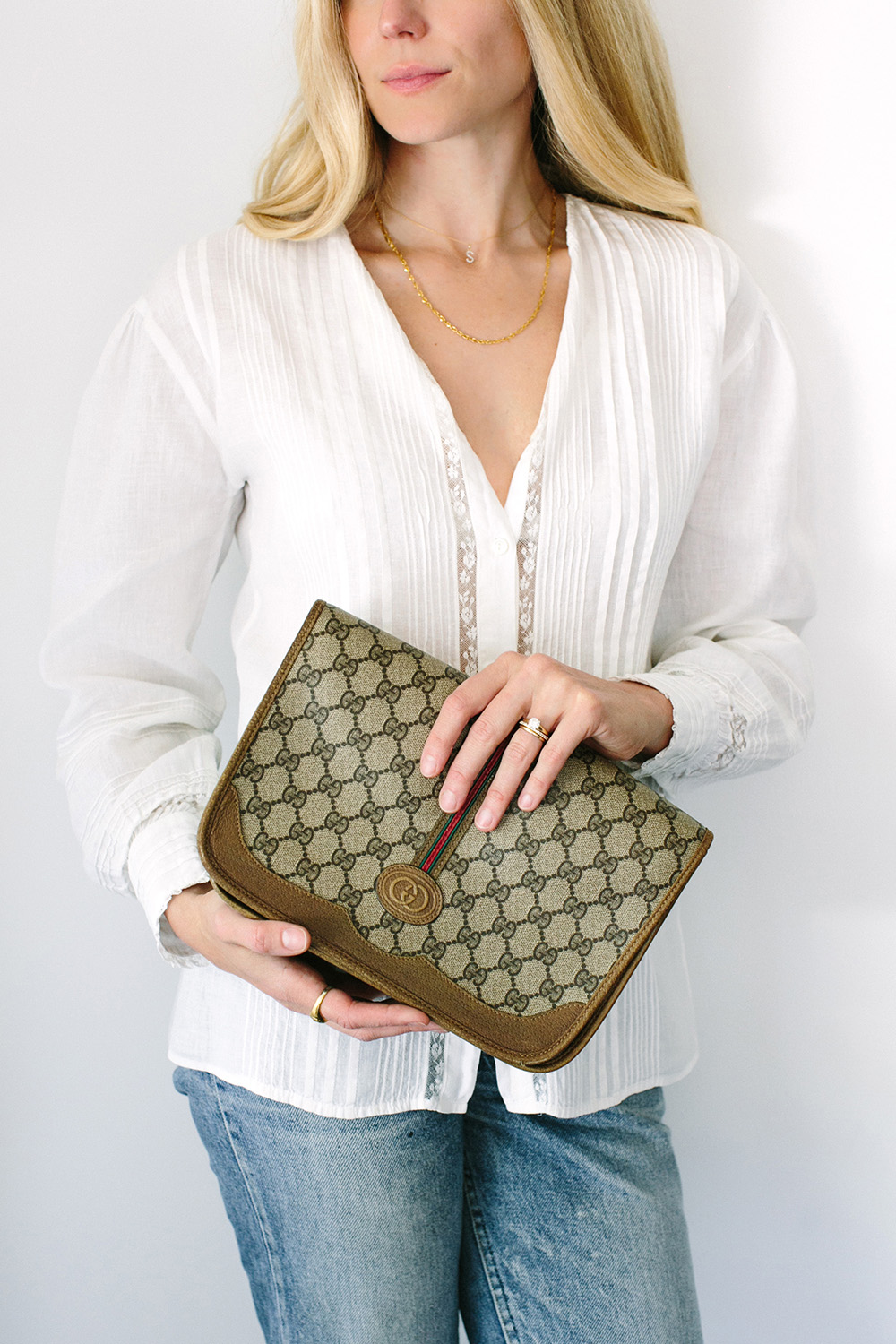
Outside of shoes, what’s your favorite accessory of the moment?
My favorite accessories are usually sentimental ones. I have a vintage Gucci bag that was my late grandmother’s. I had to turn it into a clutch because she wore it so much that the strap fell apart. Another favorite is a dainty gold choker with a tiny diamond S that I was gifted shortly after the birth of my daughter, Simone. I never take it off.
Which are a few of your favorite fashion lines of the moment?
Lately I’ve been loving Khaite, Partow and Bottega Veneta. Frankie Shop for more affordable pieces!
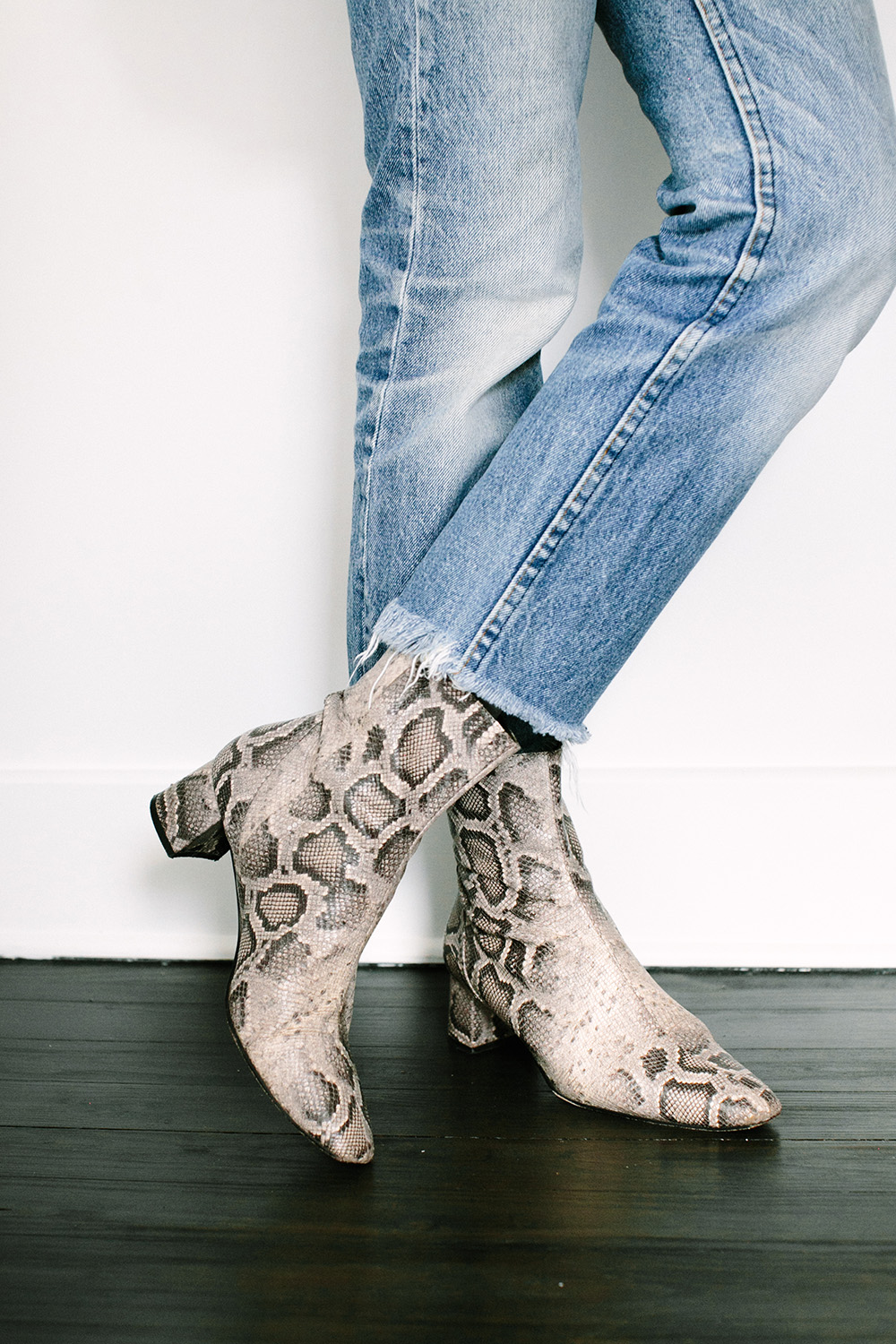
Biggest fashion mistake you’ve made:
That’s a tough one, because I’m sure there have been many! I’d have to say getting dark low lights in my hair when I was 20 a week before I had my passport photo taken. Also, low rise jeans. The early 2000s were not kind.
Favorite decade of fashion (and why):
I’m a 90s kid, and that decade will always be the ultimate as far as I’m concerned. From minimalism to grunge, it was an iconic decade with lots of attitude.
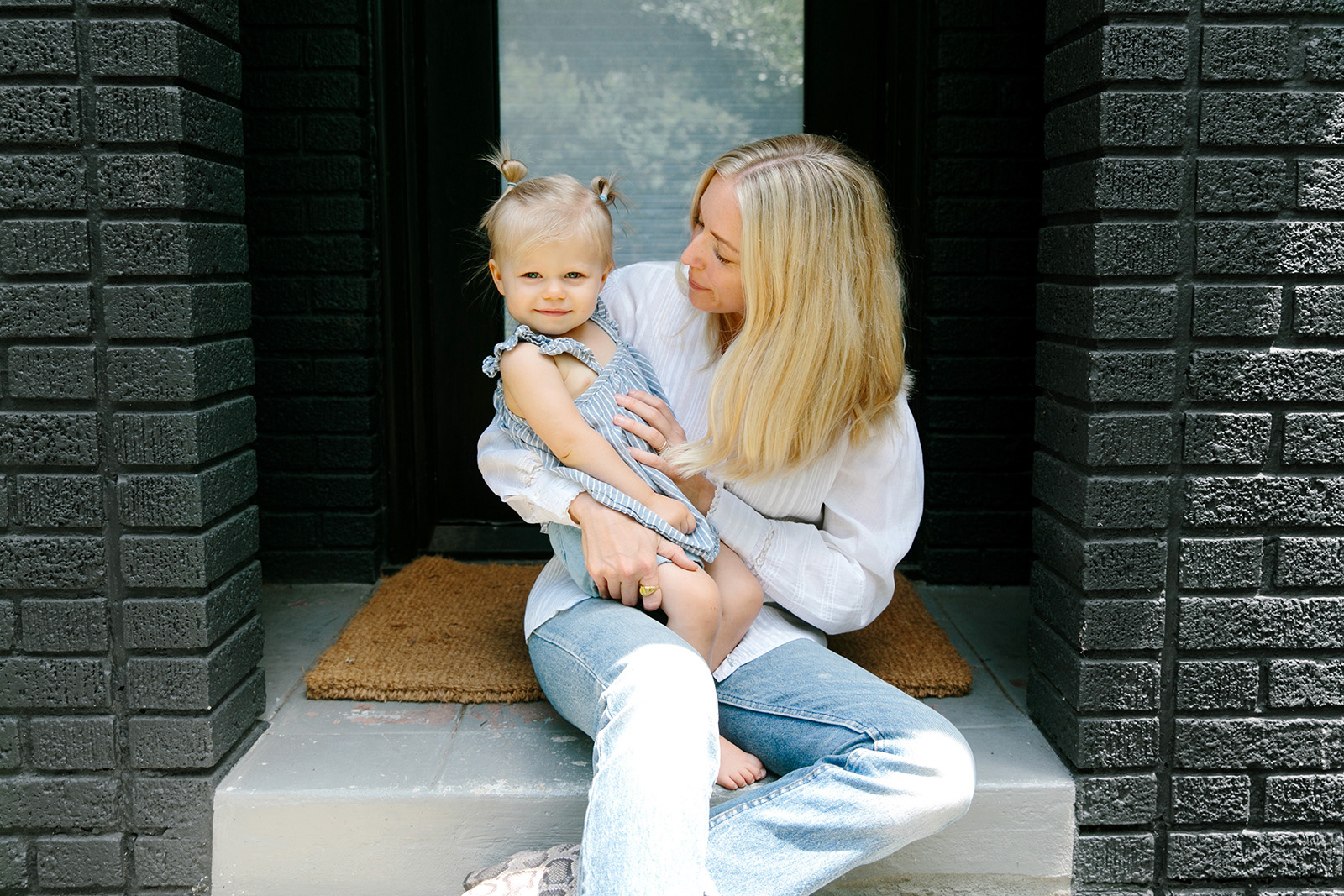
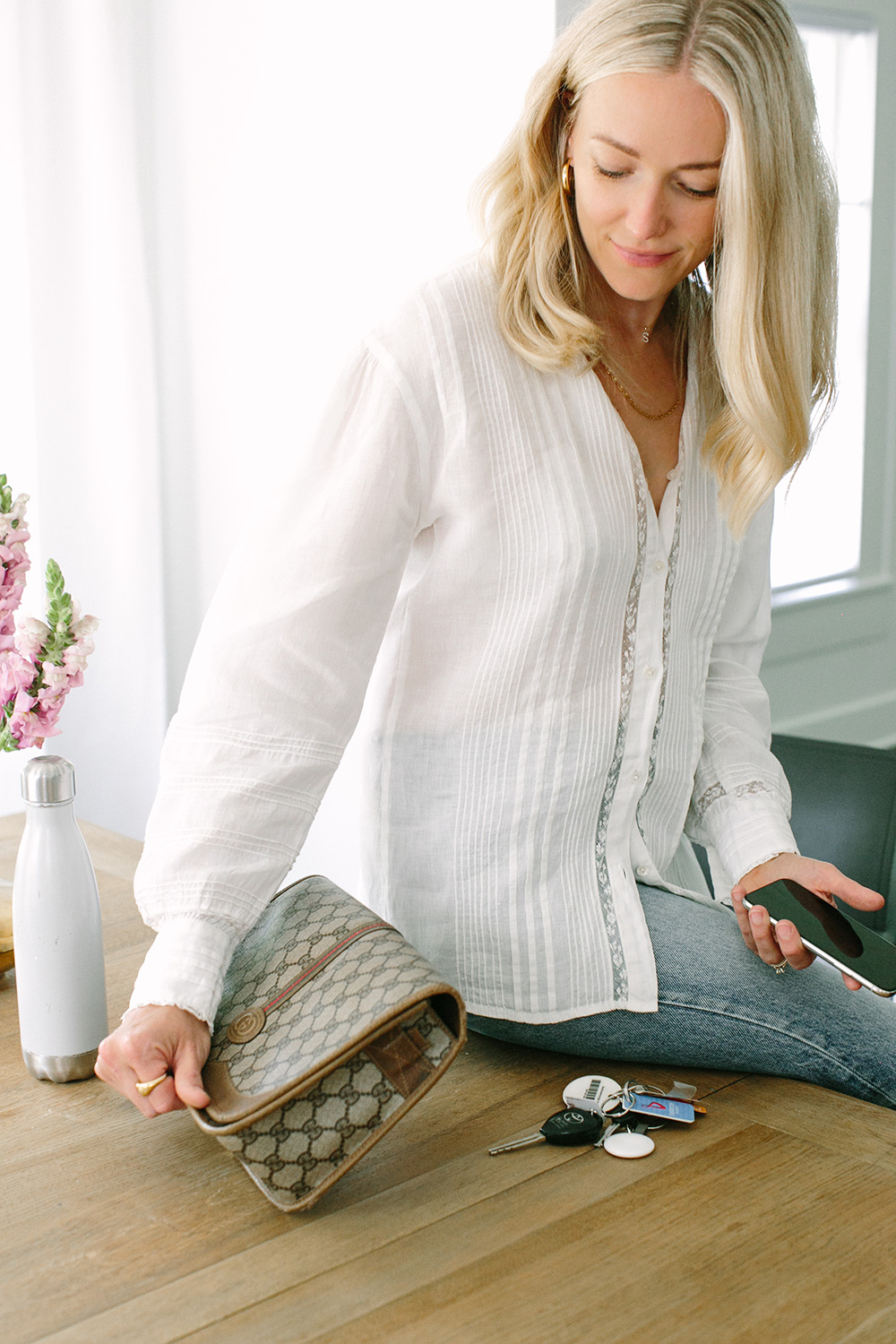
Finish this sentence: I never leave the house without ___________.
My phone and a bottle of water (boring but true!).
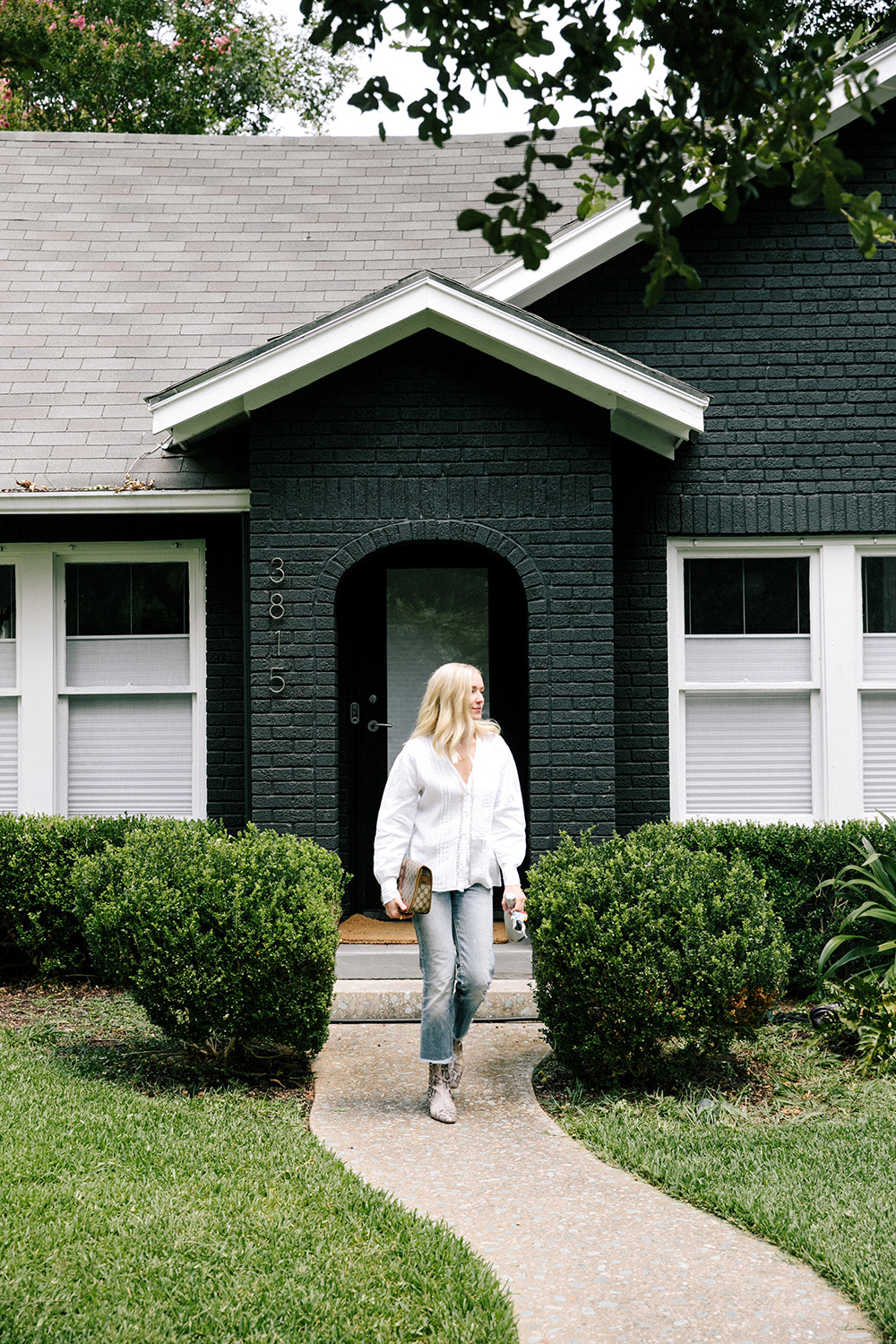
What advice would you give to someone who wants to become a designer?
To be honest, I’m hesitant to refer to myself as a designer, since I never received a formal design education. However, if you are starting out and your goal is to be in design, I would encourage you to either go to design school, if you have the means to do so, or enroll in a design class at your local college. Finding an internship is also an amazing way to really gain experience and learn by doing.


